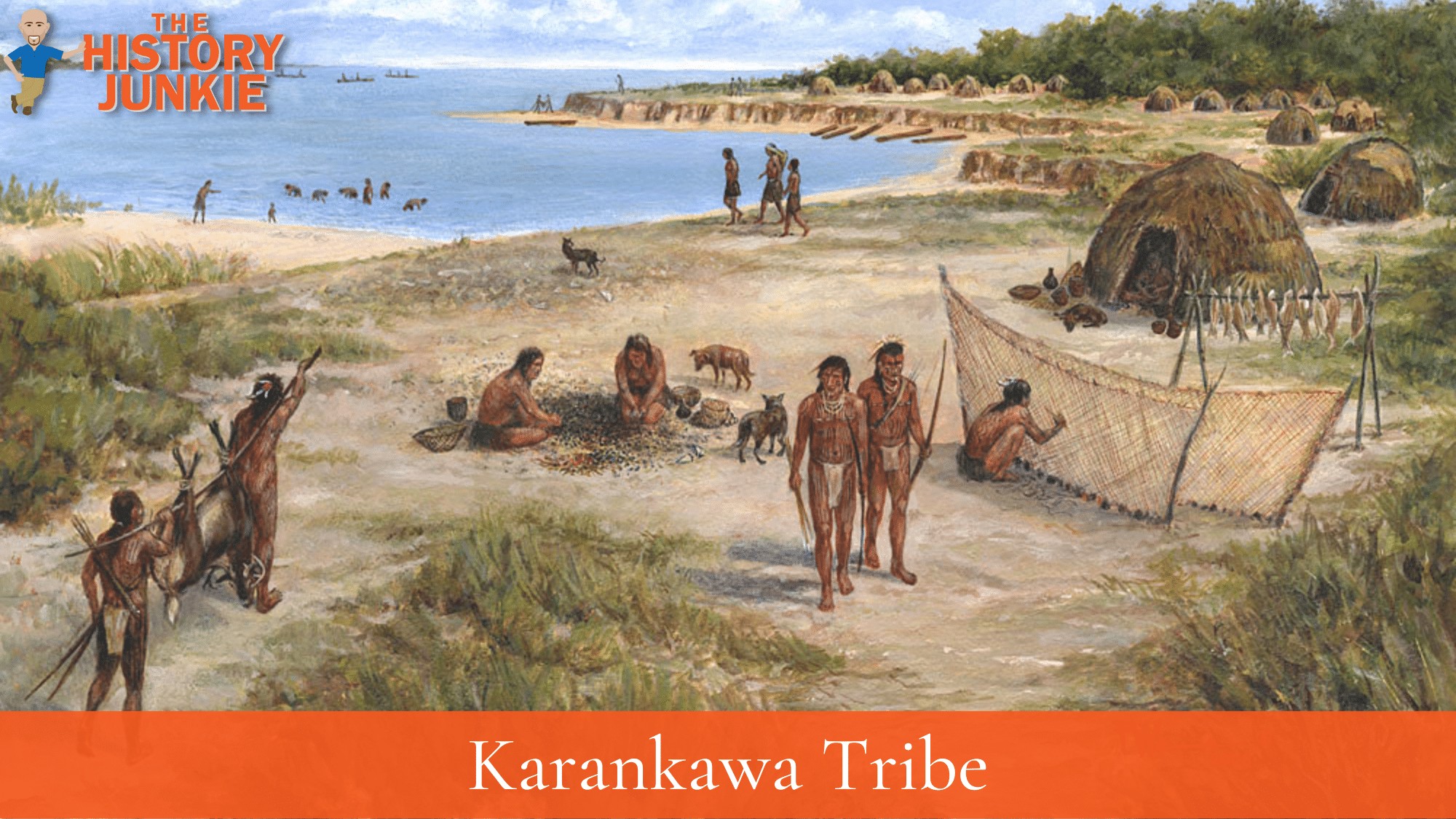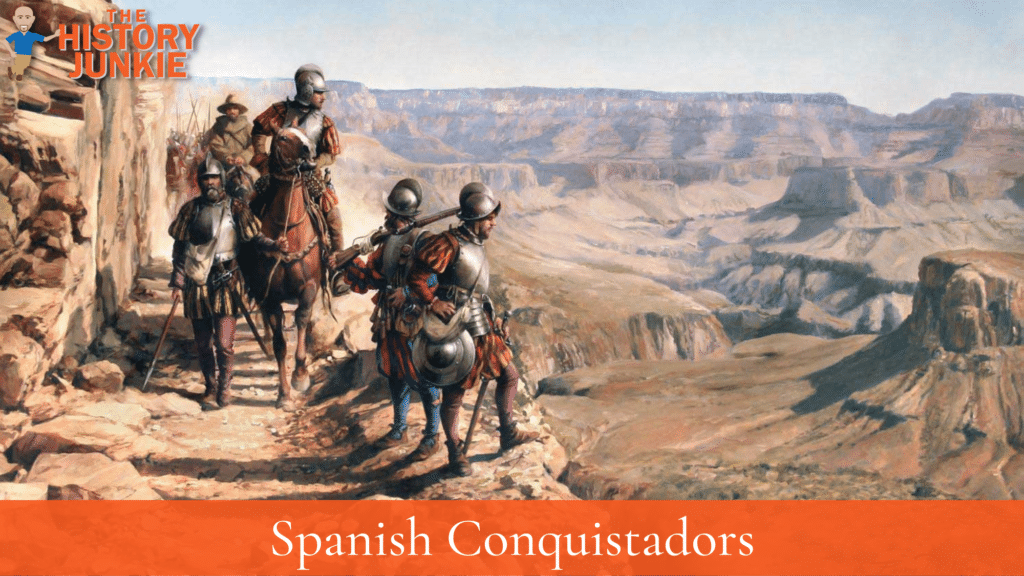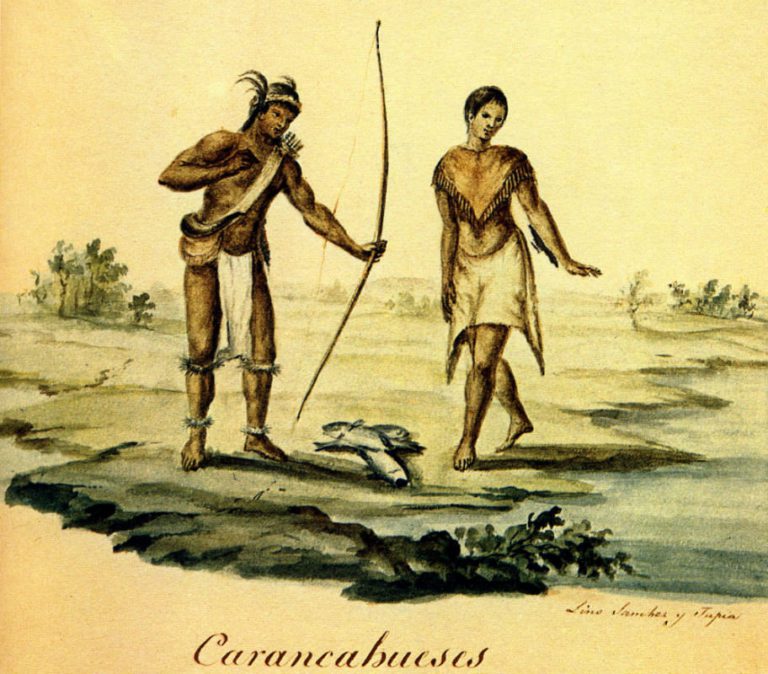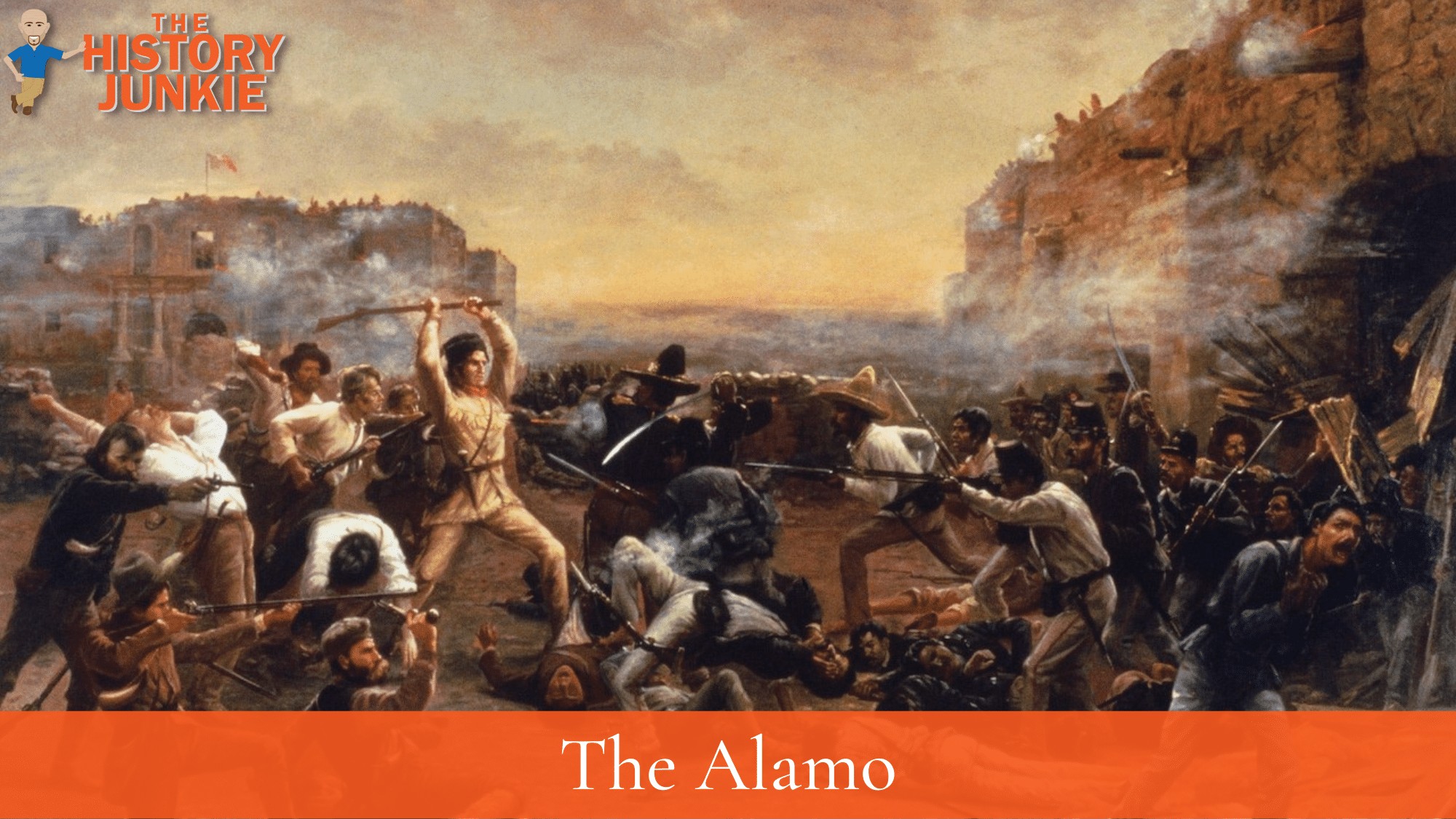
Jump to:
#1. The Karankawa Tribe Lived In Southern Texas
The Karankawa tribe was a southwest Indian tribe that lived in modern-day Southern Texas at the time of the Spanish Conquistadors arriving in the New World.
It is unknown how they arrived at this location. Some theories suggest that they came to the area through short bursts of migration. This theory is based on the similar features they shared with the Carib people.
This theory has been disputed, and there is no way of knowing how they arrived at the location. The Karankawa only exists as a remnant today.
#2. The Spanish and French Were The First To Make Contact

In 1528, one of two barges put together by survivors of the failed Pánfilo de Narváez expedition to Florida struck aground at Galveston Island. Survivors, including Cabeza de Vaca, were cared for by the Capoque band of Karankawa.
Henri Joutel, the companion of Robert Cavelier de La Salle on his last expedition in 1687, recorded several tribes living in the coastal area, including the Karankawa. He spoke of them as a peaceful tribe that would support de Vaca's claims.
The Karankawa tribe would eventually become hostile, but only after an ambush from the Spanish that left 19 dead.
#3. They Were Known For Their Archery Skill

The Karankawa Tribe was known for its excellent archery skills. While their skills with the bow were excellent, it was their bow that was unique. After they came into contact with Europeans and acquired metal, their bows became even more deadly.
Their bows were made of red cedar wood, and they made them according to the height of each archer, reaching from the foot to the chin or eye.
The bows were always kept in perfect repair. The arrows were about a yard long, tipped with steel, and feathered with wild goose feathers.
Karankawa engaged in archery for hunting and as a recreational activity. They often shot at the mark or shot arrows perpendicularly into space.
The shooting matches they held were lively and festive. Many young men were able to split the previous arrow in the target in two from a distance of at least 80 feet
#4. Conflict Begins With the Europeans

The Karankawa tribe had lived in peace for several years since the Europeans arrived, but slowly things eroded.
One of the first conflicts they had was with the pirate Jean Lafitte, who kidnapped one of their women. In response, the Karankawa launched 300 warriors to attack Lafitte. Lafitte and 200 men with cannons fought the tribe off and forced them to retreat.
Texan settlers began to move in, and soon, there would be a conflict with them. The Karankawa sought to hinder their progress by killing settlers who were guarding the ship John Motley and stealing their supplies.
By 1825, settlers banded together to attack the Karankawa. Stephen Austin commissioned Captain Kuykendall to lead volunteers to expel them from the territory, which extended to the Lavaca River.
They chased the Karankawa to Manahila Creek, where a Spanish missionary interceded on their behalf and made them promise never to again go east of the Lavaca.
This promise was broken, however, and was met with violence by the Texan colonists.
#5. The Demise of the Karankawa Tribe

During the Texan-Mexican war, some of the Karankawa served in the Mexican Army. They suffered greatly in the Battle of the Alamo of 1836, and the Texans retaliated heavily for their service.
Chief Jose Maria's 19-year-old son, Walupe, was captured by the Mexicans and killed. His father came on board the ship of a Texan settler and announced his intent of revenge.
However, he and the majority of his men were killed.
Antonio, who claimed he was the brother of Jose Maria, became chief after that. During his administration and afterward, the Karankawa population diminished significantly from disease, conflict with Europeans, and infighting.
By the 1840s, the Karankawa consisted of two groups: one settled on Padre Island, while the other applied to settle in the Mexican state of Tamaulipas. After being exiled from their homeland, the latter group reportedly plundered and stole; the Mexican government subsequently ordered troops to subdue them.
General Avalos was ordered to move the Karankawa to the border of Tamaulipas and Nuevo León. The two states disputed over the Karankawa, and they were eventually returned to Reynosa. After continued robberies, the Karankawa were removed from Texas.
In 1858, the judge of Rosario, Mexico, sent a message to the mayor of Reynosa that he had tried to arrest the Karankawa, but they moved north of the American border beyond his jurisdiction. He added that Mexicans and Americans should work together for the Karankawas' arrest.
Later that year, Juan Cortina made a surprise attack on the recently returned Karankawa and annihilated what were, at the time, believed to be the last members of the tribe.
In a study on the Karankawa published in 1888, one interviewee "thought that some [Karankawa] may be still in existence, but could not tell where."
The Karankawa went extinct as a distinct tribe in the late 19th century. (Wikipedia)
